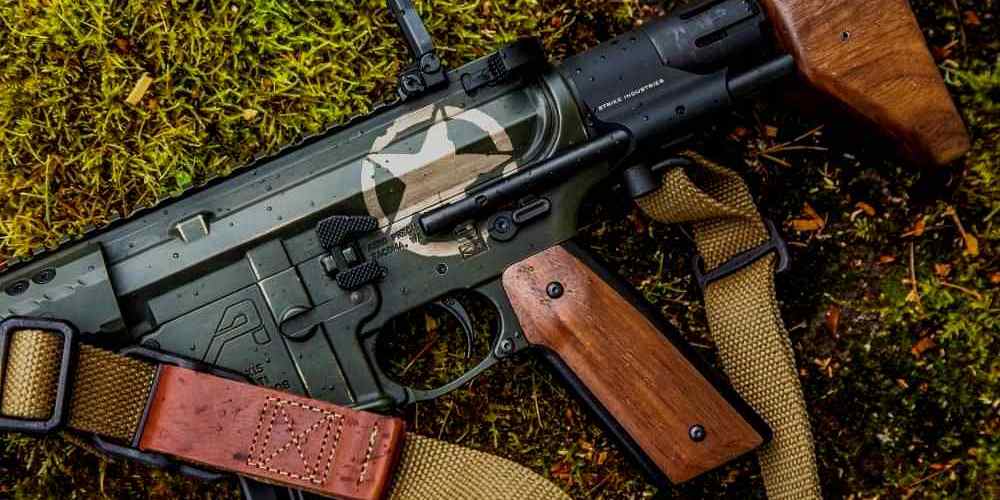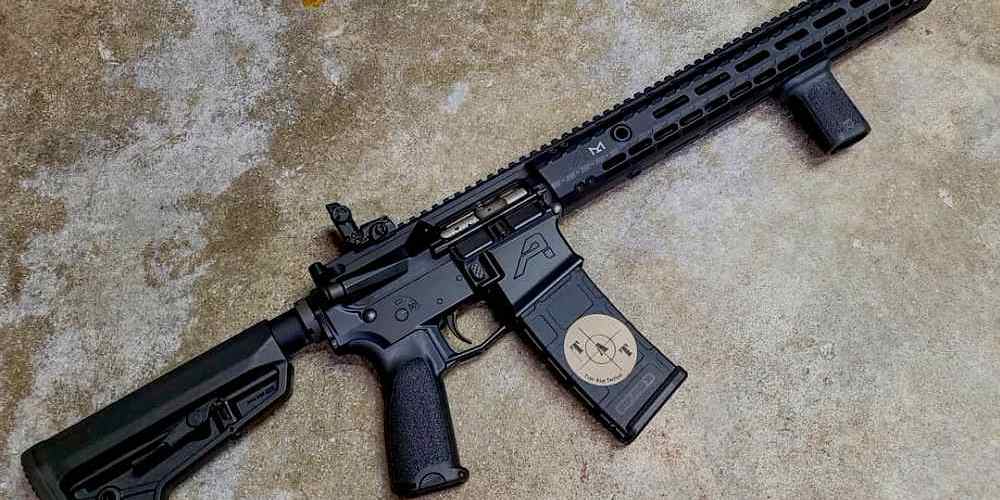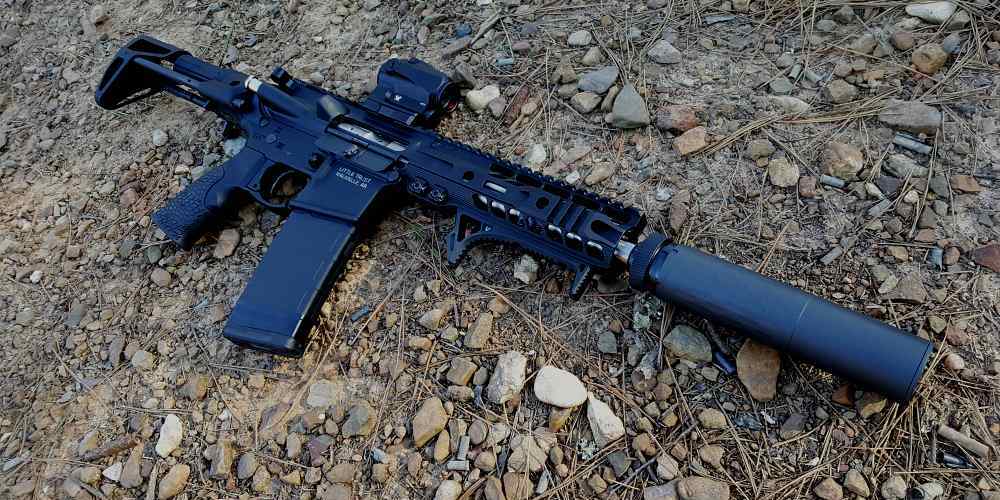“Building your own AR15: Know the laws, stay compliant.”
Federal and State Laws Regarding AR15 Builds
Building your own AR15 can be a rewarding and cost-effective way to customize your firearm to your exact specifications. However, before you dive into your DIY project, it’s important to understand the legal considerations surrounding AR15 builds. Federal and state laws regulate the manufacture and possession of firearms, including those that are built at home.
At the federal level, the Gun Control Act of 1968 and the National Firearms Act of 1934 set forth regulations that apply to all firearms, including AR15s. Under federal law, it is legal for individuals to build their own firearms for personal use without obtaining a license. However, there are restrictions on who can possess a firearm, including individuals who are prohibited from owning firearms due to criminal history or mental health issues.
When it comes to AR15 builds, the key legal consideration is ensuring that your firearm complies with the National Firearms Act. This means that your AR15 must not be classified as a short-barreled rifle, a machine gun, or any other restricted firearm under federal law. To avoid running afoul of federal regulations, it’s important to educate yourself on the specific requirements for building an AR15 and to follow all applicable laws.
In addition to federal regulations, it’s important to be aware of state laws that may impact your AR15 build. Each state has its own set of firearms laws, and some states have stricter regulations than others. Before starting your DIY AR15 project, it’s crucial to research the laws in your state to ensure that you are in compliance with all applicable regulations.
Some states have specific requirements for homemade firearms, including registration, serialization, and background checks. Failure to comply with these laws can result in criminal charges and penalties. To avoid legal trouble, it’s essential to familiarize yourself with the laws in your state and to follow all necessary procedures when building your AR15.
In addition to federal and state laws, it’s also important to consider the legal implications of selling or transferring your homemade AR15. Under federal law, it is illegal to sell or transfer a firearm to another individual without going through a licensed dealer and conducting a background check. This applies to homemade firearms as well, so if you decide to sell or transfer your AR15, you must follow all applicable laws to avoid legal consequences.
Overall, DIY AR15 builds can be a fun and rewarding project, but it’s crucial to understand the legal considerations before you start. By educating yourself on federal and state laws, following all applicable regulations, and taking the necessary steps to ensure compliance, you can enjoy your custom-built AR15 without running into legal trouble. Remember, when it comes to firearms, knowledge is power, so do your research and stay informed to protect yourself and others.
Navigating the National Firearms Act (NFA) Regulations
Building your own AR15 can be a rewarding and cost-effective way to customize your firearm to your exact specifications. However, before you dive into the world of DIY AR15 builds, it’s important to understand the legal considerations that come with building a firearm. One of the key regulations that you need to be aware of is the National Firearms Act (NFA).

The NFA was enacted in 1934 and regulates the ownership, transfer, and possession of certain types of firearms, including machine guns, short-barreled rifles, short-barreled shotguns, and silencers. If you are considering building an AR15, it’s crucial to understand how the NFA regulations apply to your build.
One of the most important things to keep in mind when building an AR15 is the definition of a “firearm” under the NFA. According to the NFA, a firearm is defined as any weapon that is designed to expel a projectile by the action of an explosive. This means that the lower receiver of an AR15, which is considered the firearm under federal law, is subject to NFA regulations.
If you are building an AR15 from scratch, you will need to purchase a stripped lower receiver, which is the only part of the firearm that is considered a firearm under the NFA. This means that you will need to go through the same process of purchasing a firearm from a licensed dealer, including passing a background check and filling out a Form 4473.
Once you have obtained your stripped lower receiver, you can begin the process of building your AR15. However, there are certain restrictions that you need to be aware of when it comes to building an AR15 that complies with the NFA regulations.
One of the key restrictions that you need to keep in mind is the overall length of your AR15. Under the NFA, a rifle with a barrel length of less than 16 inches is considered a short-barreled rifle (SBR) and is subject to additional regulations. If you want to build an AR15 with a barrel length of less than 16 inches, you will need to apply for a tax stamp from the Bureau of Alcohol, Tobacco, Firearms, and Explosives (ATF) and register your SBR with the ATF.
In addition to barrel length restrictions, you also need to be aware of the regulations surrounding the use of silencers on AR15s. Under the NFA, silencers are considered NFA items and are subject to additional regulations. If you want to build an AR15 with a silencer, you will need to apply for a tax stamp from the ATF and register your silencer with the ATF.
Overall, building an AR15 can be a fun and rewarding experience, but it’s important to understand the legal considerations that come with building a firearm. By familiarizing yourself with the NFA regulations and ensuring that your build complies with federal law, you can enjoy your custom AR15 with peace of mind.
Building an AR15 from 80% Lower Receivers
Building your own AR15 from an 80% lower receiver can be a rewarding and cost-effective way to customize your firearm to your exact specifications. However, before you dive into this DIY project, it’s important to understand the legal considerations involved in building your own firearm.
First and foremost, it’s crucial to ensure that you are legally allowed to build a firearm in your state. While federal law allows individuals to build their own firearms for personal use without a license, some states have additional regulations and restrictions on DIY gun building. Make sure to research and understand the laws in your state before starting your build.
Another important legal consideration when building an AR15 from an 80% lower receiver is serialization. Under federal law, all firearms must be serialized, but when you build your own firearm from an 80% lower receiver, you are essentially manufacturing a firearm for personal use. This means that you are not required to serialize your firearm, but it’s a good idea to do so for your own records in case your firearm is ever lost or stolen.
Additionally, it’s important to keep in mind that certain modifications to your AR15 may be regulated by the National Firearms Act (NFA). This includes adding a short barrel or a suppressor to your firearm. If you plan on making any NFA-regulated modifications to your AR15, you will need to submit an application and pay a tax stamp before you can legally possess these items.
When it comes to purchasing parts for your DIY AR15 build, it’s important to buy from reputable sources. Make sure to only purchase parts that are legal and compliant with federal and state laws. Avoid purchasing parts from unlicensed dealers or individuals, as this can put you at risk of unknowingly violating firearms laws.
As you build your AR15, it’s important to keep detailed records of your build process. This includes keeping receipts for all parts purchased, documenting the assembly process, and recording any modifications made to your firearm. These records can help protect you in case of any legal issues or disputes regarding your DIY build.
Finally, once your AR15 build is complete, it’s important to familiarize yourself with the safe and responsible use of your firearm. Make sure to follow all safety guidelines and laws when handling and storing your AR15. Properly secure your firearm when not in use and always treat it with the respect and caution it deserves.
In conclusion, building an AR15 from an 80% lower receiver can be a fun and rewarding project, but it’s important to understand the legal considerations involved. Make sure to research and comply with federal and state laws, serialize your firearm for your own records, be aware of NFA regulations for certain modifications, purchase parts from reputable sources, keep detailed records of your build process, and practice safe and responsible firearm ownership. By following these guidelines, you can enjoy your DIY AR15 build while staying on the right side of the law.
Compliance with California Assault Weapons Laws
Building your own AR15 can be a rewarding and cost-effective way to customize your firearm to your exact specifications. However, it’s important to understand the legal considerations involved in DIY AR15 builds, especially when it comes to compliance with California assault weapons laws.
California has some of the strictest gun laws in the country, and building an AR15 in the state requires careful attention to detail to ensure that you are in compliance with the law. One of the key considerations is the definition of an assault weapon in California.
Under California law, an assault weapon is defined as a semiautomatic, centerfire rifle that has the capacity to accept a detachable magazine and has one or more specified features, such as a pistol grip, a flash suppressor, or a folding or telescoping stock. If your DIY AR15 build includes any of these features, it may be considered an assault weapon under California law.
To comply with California assault weapons laws, you will need to ensure that your DIY AR15 build does not include any of the specified features that would classify it as an assault weapon. This may mean choosing alternative parts or modifications to your build to ensure that it is legal in California.
Another important consideration when building an AR15 in California is the use of a bullet button. A bullet button is a device that allows for the removal of a magazine from a semiautomatic rifle only when the action is disassembled. In California, the use of a bullet button is required for all semiautomatic rifles with detachable magazines, including AR15s.
When building your AR15, be sure to install a bullet button to ensure that your firearm is compliant with California law. Failure to do so could result in serious legal consequences, including criminal charges and the confiscation of your firearm.
It’s also important to note that California has restrictions on the use of high-capacity magazines, which are defined as magazines that can hold more than 10 rounds of ammunition. If you plan to use a high-capacity magazine in your DIY AR15 build, be aware that it may be illegal in California.
To comply with California law, you will need to use a magazine that holds 10 rounds or less in your AR15 build. This may require purchasing a new magazine or modifying an existing one to reduce its capacity.
In addition to these specific legal considerations, it’s important to remember that all firearms in California must be registered with the Department of Justice. This includes DIY AR15 builds, so be sure to complete the necessary paperwork and pay any required fees to ensure that your firearm is properly registered.
By understanding and following these legal considerations, you can enjoy the process of building your own AR15 while ensuring that your firearm is compliant with California assault weapons laws. Remember to always stay informed about changes to gun laws in California and consult with legal experts if you have any questions or concerns about the legality of your DIY AR15 build.
Importing and Exporting AR15 Parts and Components
When it comes to building your own AR15, there are a few legal considerations that you need to keep in mind. One of the most important aspects to consider is the importing and exporting of AR15 parts and components. Understanding the laws and regulations surrounding this process is crucial to ensure that you are in compliance with the law.
Importing AR15 parts and components can be a tricky process, as there are strict regulations in place to control the flow of firearms and firearm-related items across borders. In the United States, the Bureau of Alcohol, Tobacco, Firearms and Explosives (ATF) is the agency responsible for regulating the importation of firearms and firearm parts. Before you import any AR15 parts or components, you will need to obtain the necessary permits and licenses from the ATF.
One of the key things to keep in mind when importing AR15 parts and components is that certain items may be restricted or prohibited from entering the country. It is important to do your research and ensure that the items you are importing are legal and compliant with all relevant laws and regulations. Failure to do so could result in serious legal consequences.
Exporting AR15 parts and components is also subject to strict regulations. In addition to obtaining the necessary permits and licenses from the ATF, you will also need to comply with the export control laws of the country you are exporting to. These laws are in place to prevent the illegal transfer of firearms and firearm-related items to unauthorized individuals or entities.
When exporting AR15 parts and components, it is important to ensure that you are not violating any laws or regulations. This includes ensuring that the items you are exporting are legal in the destination country and that you have the necessary permissions to export them. Failure to comply with these laws could result in severe penalties, including fines and imprisonment.
In addition to the legal considerations surrounding the importing and exporting of AR15 parts and components, it is also important to consider the potential impact on national security. The illegal transfer of firearms and firearm-related items can pose a serious threat to public safety, and it is essential to take all necessary precautions to prevent this from happening.
Overall, when it comes to DIY AR15 builds, understanding the legal considerations surrounding the importing and exporting of parts and components is crucial. By ensuring that you are in compliance with all relevant laws and regulations, you can build your AR15 safely and legally. Remember to do your research, obtain the necessary permits and licenses, and always prioritize safety and compliance.




